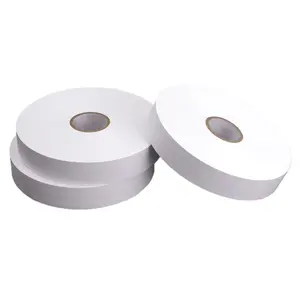B2S Corporation
Proudct
Paper Ribbon

Paper is a versatile material made from fibers obtained from various sources, primarily wood pulp from trees. The content and composition of paper can vary depending on the specific type and intended use. However, here are some common aspects regarding the content of paper:
- Fibers: The primary content of paper consists of fibers derived from plant sources. Wood pulp is the most commonly used fiber source, obtained from trees through a process of chemical or mechanical pulping. Other fiber sources include bamboo, cotton, hemp, and recycled paper.
- Fillers: Paper may contain fillers, such as calcium carbonate (chalk), kaolin clay, or titanium dioxide, to improve properties like opacity, smoothness, and brightness. Fillers can enhance the printing quality, reduce costs, and improve the paper’s surface characteristics.
- Additives: Various additives may be incorporated into paper to enhance its performance and properties. These additives include sizing agents, which improve the paper’s resistance to water and ink absorption, and retention aids, which help in controlling the retention and distribution of fibers and fillers during the papermaking process. Additionally, optical brightening agents may be used to enhance the paper’s brightness and whiteness.
- Papermaking Chemicals: Papermaking involves the use of chemicals to facilitate the process and improve the quality of the final product. These chemicals include pulping agents, such as sodium hydroxide and sodium sulfide, to break down the fibers during pulping. Additionally, bleaching agents, like hydrogen peroxide or chlorine dioxide, may be used to lighten the color of the pulp.
- Coatings: Some types of paper, such as coated papers or glossy papers, have coatings applied to their surface to enhance properties like smoothness, gloss, and ink absorption. These coatings can be made from materials like clay, latex, or other polymers.
- Recycled Content: Many papers contain a certain percentage of recycled fibers obtained from post-consumer waste paper. Recycling helps reduce the demand for virgin fibers and promotes sustainability in paper production.
